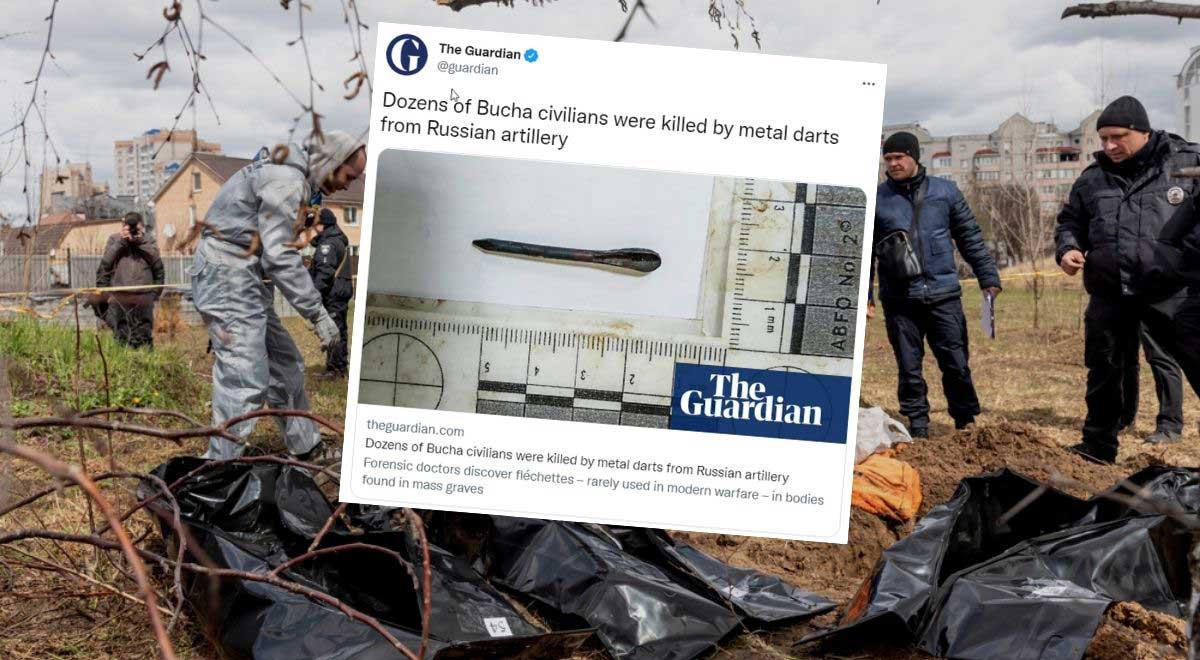British The Guardian reported that forensic scientists found in the bodies of civilians killed by the Russians in Bucha, flutes – small darts placed in projectiles to increase firepower, which were widely used during the First World War.
“We found very thin, nail-like objects in the bodies of men and women. They are very difficult to find in the body, they are too thin. Most of these bodies come from the areas of Bucha and Irpin, Vladislav Pirovsky, a Ukrainian forensic scientist who performs autopsies found in mass graves, told the Guardian.
Independent firearms experts who examined photographs of metal darts found in bodies in Bucha confirmed they were flutes. Neil Gibson of the British Fenix Insight group noted that they originated from the 122 mm 3Sh1 artillery shell used by Russian artillery. According to many witnesses from Bucha, Russian artillery fired flutes in the days leading up to the area’s retreat at the end of March.
How do arrow cartridges work?
Flutes are placed in tank or artillery shells. Each projectile can contain up to 8000 such darts with a diameter of 3-4 cm. When the projectile is detonated, the flutes scatter over a large area. At the moment of hitting the body of the victim, the dart can lose its rigidity, bending like a hook, and its back part with the target often breaks off, additionally injuring the victim.
They were used as anti-personnel weapons during World War I when dropped from aircraft. They were not widely used during World War II, but reappeared during the Vietnam War. Although human rights groups have long tried to ban the use of flutes, they are not prohibited by international law. However, the use of lethal inaccurate weapons in densely populated civilian areas is a violation of humanitarian law.
Today, they are rarely used in combat, although they are sometimes used by the Israeli armed forces, incl. in military operations in Lebanon and the Gaza Strip. In March 2008, they killed Fadel Shana, a Palestinian journalist and cameraman working with Reuters.

